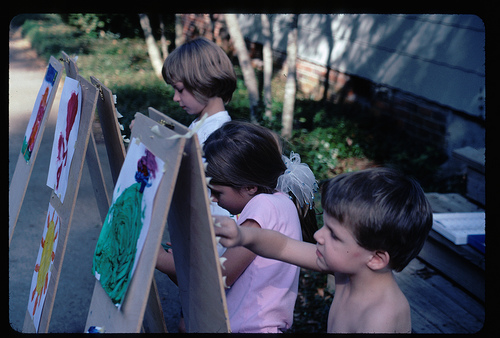Nancy Beal, an arts teacher in primary school, offers some precious pieces of advice to help parents to develop their kids’ creativity.
The materials and the environment
You need to think primarily in terms of art materials. You should teach long-term familiarity with these materials so that the children can master them and use them to express their own life experiences. The goal is to have the children feel so comfortable and confident with these materials that they are willing to use them to speak about their innermost thoughts and feelings. Keep each art material separate, so that it can be clearly understood. A clarity of presentation frees the children to work creatively
You need to create a working environment, an accepting atmosphere in which the children can feel safe, comfortable, and emotionally secure. That will help their art experience to be exploratory, to be unthreatening and fun.

What to teach
Six basic art areas: collage, painting, clay, drawing, printmaking, and construction can be learnt to young children. For each of these, you can order materials that are satisfying to the eye and stimulating to the touch. You should first begin with an open-ended exploration of the materials. This exploration in the beginning might be much more important than seeking any specific results.
In the beginning, you can introduce collage, paint, clay, and pencil drawing. And later, you may add printing and construction. When you feel the children have really had it with one material and are ready to move on, however, try to extend each material as long as possible to give the kids a chance to truly explore it in depth. Their investigations may require many weeks, months, and even years. This approach produces a rich, personal art, an expression of something the children have explored deeply and to which they have applied their newly acquired skills.
Don’t think about how you want things to look and stop trying to march the kids step-by-step towardsthat end. You should be interested in the process itself and in having the child connect with it in a personal way. Let each one work at his or her own pace.
Try to intervene as little as possible, while setting clearly defined limits as to what use of materials.
How to observe the work
It’s important that a grown-up not project his or her own ideas onto the work. Asking a five- or six-year-old what his painting or drawing represents can be confusing. The painting or drawing may have one image along with many additional shapes and lines, added for the purposes of design. You have to understand the child’s aims and can accomplish this by paying close attention to what is happening.
Source : 2think.org




